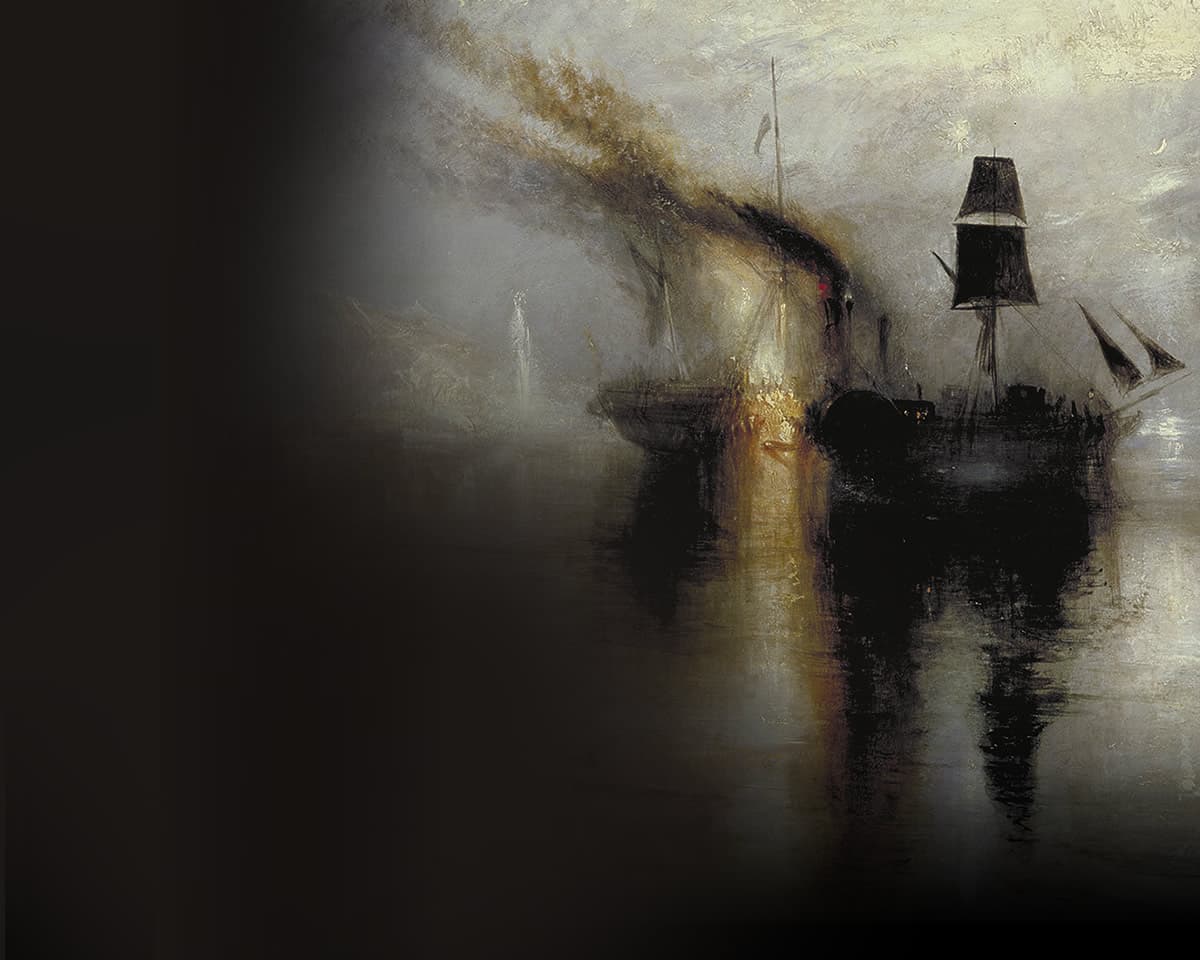
J M W
TURNER
Great Britain
1775
–
1851
87.0 (h) x 86.7 (w) cm Tate Accepted by the nation as part of the Turner Bequest 1856 Photo: © Tate 2013
These two paintings, though very different, were hung as a pair when first displayed. War portrays Napoleon in exile on the island of St Helena. The isolated figure is neither demonised nor heroicised but suggests instead the futility of conflict. In verses attached to the canvas, Turner refers to the sunset as a ‘sea of blood’. Peace shows the burial at sea of his friend, the artist David Wilkie. The cool palette and saturated blacks convey the calm of Wilkie’s death, compared to Napoleon’s disgrace. Both works were roundly criticised at the time for their lack of finish.
These two paintings, though very different, were hung as a pair when first displayed. War portrays Napoleon in exile on the island of St Helena. The isolated figure is neither demonised nor heroicised but suggests instead the futility of conflict. In verses attached to the canvas, Turner refers to the sunset as a ‘sea of blood’. Peace shows the burial at sea of his friend, the artist David Wilkie. The cool palette and saturated blacks convey the calm of Wilkie’s death, compared to Napoleon’s disgrace. Both works were roundly criticised at the time for their lack of finish.
These two paintings, though very different, were hung as a pair when first displayed. War portrays Napoleon in exile on the island of St Helena. The isolated figure is neither demonised nor heroicised but suggests instead the futility of conflict. In verses attached to the canvas, Turner refers to the sunset as a ‘sea of blood’. Peace shows the burial at sea of his friend, the artist David Wilkie. The cool palette and saturated blacks convey the calm of Wilkie’s death, compared to Napoleon’s disgrace. Both works were roundly criticised at the time for their lack of finish.

